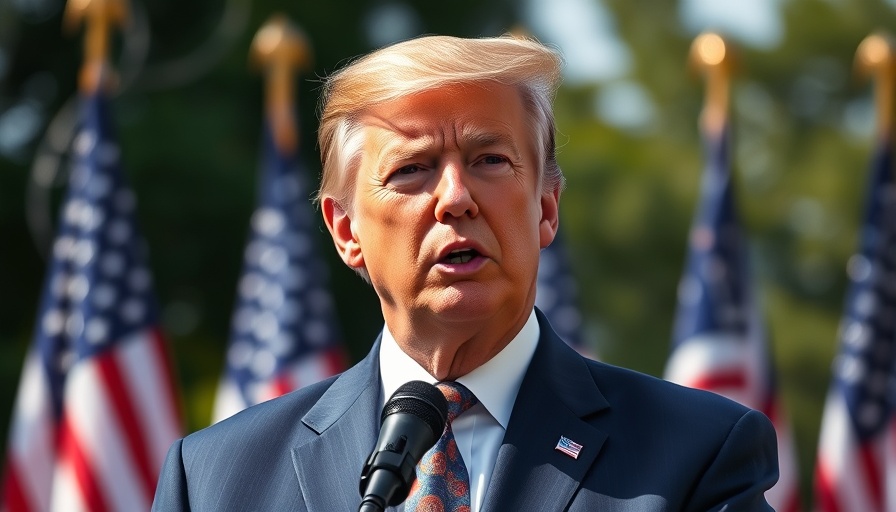
The Unfolding Legal Battle Over Trump’s Executive Order
In a significant legal ruling, an appeals court has permitted President Donald Trump's controversial executive order to advance, which aims to diminish collective bargaining rights for federal employees. This decision, which comes during an ongoing lawsuit from various unions, is raising serious concerns among advocates for federal workers and igniting debates across the nation about labor rights at the federal level.
Political Motivations Behind the Order
Trump's administration argues that the executive order is essential for streamlining the federal workforce to bolster national security. Yet, critics contend that it primarily serves to target federal unions and silence dissent. Union leaders assert that the intention behind the order encompasses a broader scheme to enforce mass firings and retaliate against union members who oppose the administration’s agenda. The National Treasury Employees Union has been particularly vocal in this regard, claiming it is a veiled attack on their rights.
What Happens Next? A Look Forward
As the judicial review continues, the immediate implications of the order have sparked fears of widespread job losses among federal employees. With sweeping changes proposed for various departments—ranging from the IRS to the EPA—stakeholders wonder how this executive maneuver will affect the stability and morale of the federal workforce. If the executive order remains in place, we might witness a restructuring reminiscent of the dramatic cutbacks seen in previous administrations, but on an unprecedented scale.
Historical Context: Labor Relations in American Politics
This ruling is not merely a product of contemporary politics but is rooted in a historical context that has often seen labor relations become a battleground for differing ideologies. Since the passage of the National Labor Relations Act in 1935, unions have played a pivotal role in advocating for the rights of workers, shaping the very framework of employment standards we see today. Historically, attempts to curtail union influence have faced stiff opposition, making this recent development particularly alarming for advocates of labor rights.
Counterarguments: The Business Perspective
Supporters of the executive order include business advocates who argue that reducing the influence of unions could lead to a more agile and responsive federal workforce. They contend that bureaucratic regulations hinder effective governance and that reforming the collective bargaining framework will enhance productivity and accountability. However, this position overlooks the fundamental rights of workers to organize and speak collectively—rights that have substantial moral and economic implications.
The Broader Economic Impact on Federal Employees
The potential ramifications of Trump's anti-union order extend beyond the immediate fate of unionized employees. A decline in collective bargaining could set a precedent for other worker rights across the country, impacting wages, benefits, and job security for millions. How will such changes affect the economic landscape for federal workers and, by extension, the communities they serve?
Conclusion: The Need for Vigilance and Advocacy
This unfolding crisis necessitates vigilance from both union leaders and everyday citizens as they navigate the complexities of labor rights and political maneuvers. Advocacy must intensify to ensure that the rights of workers, particularly within the federal government, remain protected during these tumultuous times. In light of these developments, engaging in the political process and supporting legislation that defends labor rights has never been more critical.
As the legal battles advance, the effectiveness of unions and their ability to represent workers will be tested in a climate that increasingly favors managerial authority over workforce rights. It is paramount for these workers, their advocates, and the public to remain informed and proactive, ensuring that the legacy of labor rights in America continues to thrive.
 Add Row
Add Row  Add
Add 




 Add Row
Add Row  Add
Add 

Write A Comment